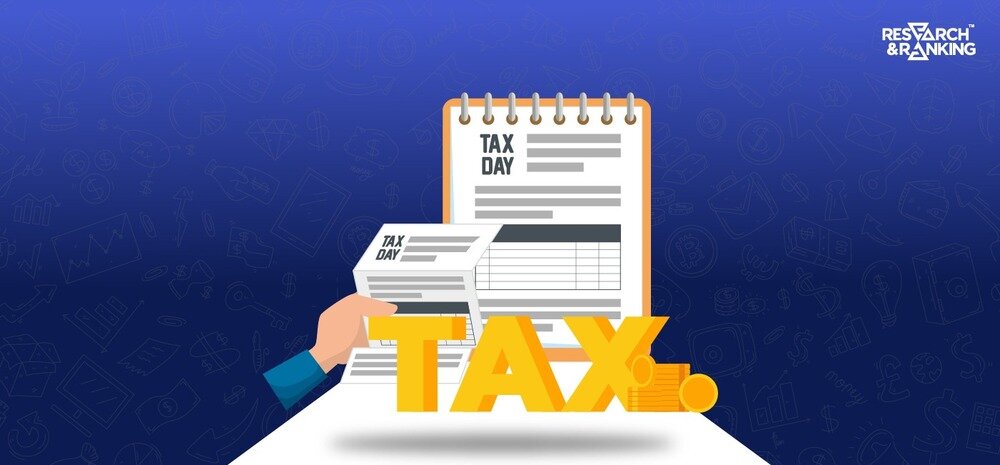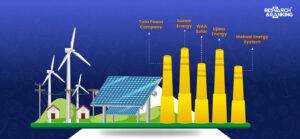In India, the government offers two income tax regimes: the old tax slab and the new tax slab.
While the new tax regime introduced in the 2020 budget features lower tax rates with no deductions, the old tax regime continues to entice taxpayers with its numerous deductions and exemptions.
This choice and flexibility with the new vs old tax regime allows you to choose a tax regime that benefits you the most based on your financial situation, investments, and spending pattern.
This blog delves deep into the old tax regime, outlining its tax slabs and exploring the various tax-saving opportunities it presents.
Old Regime Tax Slabs: Income and Tax Rates
The old tax regime’s structure is meticulously designed to cater to individuals across different age groups, offering three distinct categories: general taxpayers (individuals below 60 years), senior citizens (aged 60 years but below 80 years), and super senior citizens (aged 80 years and above).
Here’s a detailed breakdown of the tax slabs in the old regime:
| Income Range (₹) | Tax Rate |
| For General Taxpayers (Below 60 Years) | |
| Up to 2,50,000 | Nil |
| 2,50,001 – 5,00,000 | 5% |
| 5,00,001 – 10,00,000 | 20% |
| Above 10,00,000 | 30% |
| For Senior Citizens (60-79 Years) | |
| Up to 3,00,000 | Nil |
| 3,00,001 – 5,00,000 | 5% |
| 5,00,001 – 10,00,000 | 20% |
| Above 10,00,000 | 30% |
| For Super Senior Citizens (80 Years and Above) | |
| Up to 5,00,000 | Nil |
| 5,00,001 – 10,00,000 | 20% |
| Above 10,00,000 | 30% |
Note: Health and Education cess of 4% is levied on the income tax amount, along with surcharges applicable to incomes exceeding ₹50 lakhs.
Standard Deduction Under the Old Regime Tax Slab
Introduced in Budget 2018, the standard deduction replaced the transport allowance and medical reimbursement, simplifying tax calculations for salaried employees and pensioners.
The standard deduction under the old tax regime offered a flat deduction of ₹50,000 for salaried employees and pensioners, providing relief without the need to prove any expenses.
This deduction directly reduces taxable income, enhancing the take-home pay of eligible individuals.
What are Surcharges in the Old Regime Tax Slab? What are the Surcharge Rates?
In India’s tax system, surcharges are additional taxes imposed on incomes above specific thresholds, making the tax system more progressive. This means that those with higher incomes must pay more taxes than those with lower incomes.
These are calculated before the Health and Education Cess of 4%.
| Income Range (₹) | Surcharge on Income Tax |
| 50 lakhs to 1 crore | 10% |
| 1 crore to 2 crores | 15% |
| 2 crores to 5 crores | 25% |
| Above 5 crores | 37% |
What are Rebates in the Old Tax Regime Slab?
In the old tax regime, a rebate under Section 87A allows you to receive a rebate, or equivalent, of up to ₹12,500 if your net taxable income is up to ₹5,00,000.
This can reduce your tax liability to zero.
Tax rebates provide significant relief to low-income earners and make taxation more equitable.
Old Regime | New Regime | |
| Salary | 8,00,000 | 8,00,000 |
| Allowance | 2,50,000 | – |
| Effective Salary | 8,00,000 – 2,50,000 | – |
| 5,50,000 | 8,00,000 | |
| Exemption | 50,000 | 50,000 |
| Effective income | 5,00,000 | 7,50,000 |
| Slab 1 Tax | 2,50,000 x 0% = 0 | 3,00,000 x 0% = 0 |
| Slab 2 Tax | 50,000 x 5% = 2,500 | 3,00,000 x 5% = 15,000 |
| Slab 3 Tax | 2,00,000 x 5% = 10,000 | 1,50,000 x 10% = 15,000 |
| Due Tax | 12,500 | 30,000 |
| Rebate (87A | 12,500 | 0 |
| Health and Education Cess | 0 | 1200 |
| Payable Tax | 0 | 31,200 |
*Remember, a rebate is applicable on your taxable income only when it is less than 5 lakhs in the old regime and 7 lakhs in the new regime. Anything above this threshold and the rebate under section 87A is no longer available.
Tax Saving Opportunities in the Old Tax Slabs
Tax Deductions Under the Old Tax Regime Slab
Tax deductions are expenses or investments that can be subtracted from gross total income to reduce the overall taxable income and, thus, the tax liability.
Below are some key sections under which deductions can be claimed:
Section 80C Deductions
Under the old tax regime, Section 80C is one of the most vital tax-saving incentives. You can claim a deduction of up to ₹1.5 lakhs on listed investments and expenses.
This section provides details of tax-saving options that can be useful for your future financial plans.
| Investment Option | Interest Rate | Minimum Lock-in Period | Risk Associated |
| ELSS | 12%-15%(varies depending on market fluctuations) | 3 Years | High |
| FD(Fixed Deposit) | Up to 8.40% | 5 Years | Low |
| NPS | 8% – 10% | Till the investor is 60 years of age. | High |
| NSC | 7.7% | 5 Years | Low |
| PPF | 7.10% | 15 Years | Low |
| SCSS | 8.20% | 5 Years | Low |
| Sukanya Samriddhi Yojana | 8.20% | 21 Years | Low |
| ULIP | 8% – 10%(varies depending on market fluctuations) | 5 Years | Moderate |
Note: Under Section 80C, the total combined deduction from all the above investments cannot exceed ₹1.5 lakhs.
Home Loan Tax Benefit
If you are an aspiring homeowner, you are eligible for various deductions related to home loans with the old tax regime slabs.
Here are some details of the tax-saving options under this criteria.
| Deductions Category | Sections | Maximum Deduction |
| Principal | 80C | ₹1.5 Lakh |
| Interest | 24b | ₹2 Lakh |
| Interest | 80EE | ₹50,000 |
| Stamp Duty | 80C | ₹1.5 Lakh |
| Interest | 80EEA | ₹1.5 Lakh |
Note: Deduction limits are applicable only when specific conditions under the categories are met.
Section 80TTA Deductions
Section 80TTA under the old tax regime provides individuals and Hindu Undivided Families (HUFs) in India with a deduction on interest income earned from eligible sources.
Here are some details of the tax-saving options under this section that you can choose to avail yourself of.
| Type of Interest Income | Eligibility | Maximum Deduction |
| Savings Account Interest | Individuals and HUFs | ₹10,000 |
| Cooperative Society Deposit Interest | Individuals and HUFs | ₹10,000 |
Note: Deduction limits are applicable only per individual or HUF, not per account.
Section 80D Deductions
Section 80D under the old tax regime provides individuals and Hindu Undivided Families (HUFs) in India with a deduction on Medical insurance premiums.
Here are some details of the tax-saving options that you can avail of under this section.
| Policy Holder | Deduction(Self & Family) | Deduction(Parents) | Preventive Health Check-Up | Maximum Deduction |
| Self & Family (below 60 years) | ₹25,000 | – | ₹5,000 | ₹25,000 |
| Self & Family + Parents (all below 60 years) | ₹25,000 | ₹25,000 | ₹5,000 | ₹50,000 |
| Self & Family (below 60) + Parents (above 60 years) | ₹25,000 | ₹50,000 | ₹5,000 | ₹75,000 |
| Self & Family + Parents (all above 60 years) | ₹50,000 | ₹50,000 | ₹5,000 | ₹1,00,000 |
| Members of HUF(below 60 years) | ₹25,000 | ₹25,000 | ₹5,000 | ₹25,000 |
| Members of HUF(a member is above 60 years) | ₹50,000 | ₹50,000 | ₹5,000 | ₹50,000 |
Section 80E Deductions
Section 80E under the old tax regime provides a limitless tax exemption on the interest paid on your children’s education loans. Here, either of the parents repaying the loan can avail of this taxation exemption.
| Nature of Loan | Deduction Limit |
| Interest paid on loan for higher education | No upper limit (for 8 years or until interest is paid, whichever is earlier) |
Section 80G
Section 80G of the Income Tax Act allows deductions for donations made to specified charitable organizations, offering taxpayers the opportunity to reduce their taxable income while contributing to social causes.
| Type of Donation | Deduction Limit |
| Donations to certain funds, charitable institutions | 50% or 100% of the donation, subject to specified limits |
Tax Exemptions
Exemptions are allowances offered on specific components of an individual’s income, which are not subject to tax, thereby reducing the taxable income.
House Rent Allowance
If you are a renter, the House Rent Allowance provides tax benefits on submission of valid rent receipts. Under the old tax regime, exemption depends on the salary, rent paid, and HRA received.
The exemption depends on the least of the following:
- Actual HRA received.
- 50% of basic salary (for metros) or 40% (for non-metros).
- Rent is paid minus 10% of the basic salary.
If your annual rent is over ₹1 Lakh, you will need the landlord’s PAN.
Leave Travel Allowance (LTA)
Exemption for travel expenses (not accommodation or food) to any destination in India twice in a block of four years.
Conclusion
The old tax regime, with its detailed tax slabs and many tax-saving opportunities, offers a significant advantage in efficiently planning taxes.
By understanding and utilizing the deductions, exemptions, and rebates available with old tax regime slabs, you can significantly reduce your tax liability, making an informed choice crucial for your financial well-being.
FAQs on Old Tax Regime
Which is better, the old tax slabs or the new tax slabs?
The choice between old and new tax regimes depends on individual circumstances. The old regime may benefit those with significant investments and deductions, while the new regime could benefit those with fewer deductions.
Which tax regime is better for a 15 lakhs salary?
The better tax regime for a salary of 15 lakhs depends on your deductions and exemptions. The old regime might be more beneficial if you have substantial deductions (like 80C, HRA). Without such deductions, the new regime may offer lower tax liability.
Can I switch between the old and new tax regimes?
Individuals and HUFs can switch between the old and new tax regimes at the beginning of each financial year based on their assessment of which regime will be more beneficial.
Are there any conditions attached to claiming deductions under the old tax regime?
Yes, most deductions under the old regime are subject to certain conditions, such as the type of investment, the lock-in period, and the amount invested. Meeting these conditions is essential to availing of the deductions.
How useful was this post?
Click on a star to rate it!
Average rating 3 / 5. Vote count: 2
No votes so far! Be the first to rate this post.
I’m Archana R. Chettiar, an experienced content creator with
an affinity for writing on personal finance and other financial content. I
love to write on equity investing, retirement, managing money, and more.
























